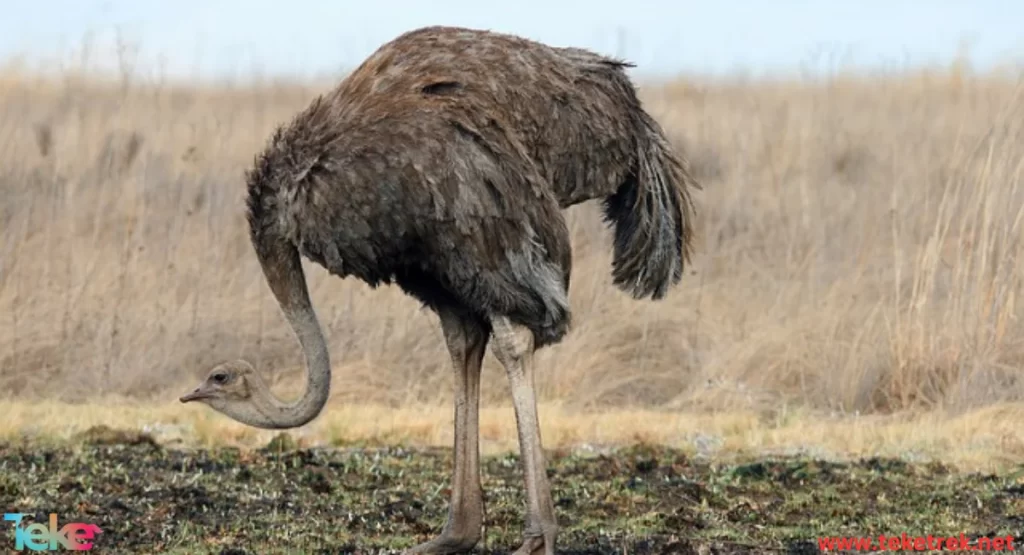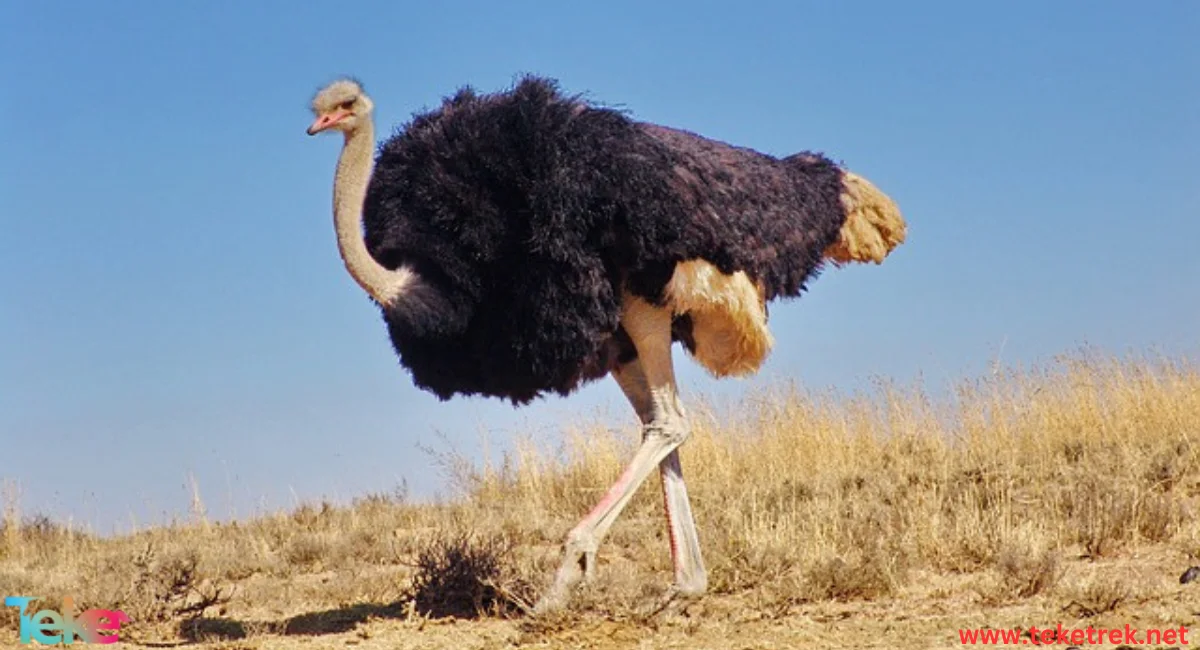There are several types of ostriches, including the Blue-necked Ostrich is the Second largest bird in size. But why is it named so? Where does it reside and how does it live? This is what we review below on TekeTrek.

Physical Characteristics of the Blue-necked Ostrich
- The Blue-necked Ostrich belongs to the kingdom Animalia, class Aves, family Strutionidae, order Struthioniformes, subclass Vertebrata, and the class of birds.
- The Blue-necked Ostrich, or Somali Ostrich, closely resembles the common ostrich, but the skin color of the neck and thighs of the Somali Ostrich is blue, not pink.
- The color becomes shiny blue in males during the mating season.
- The Somali Ostrich size is similar to other ostrich species, and the average body mass may be slightly smaller than some subspecies of the common ostrich.
- Males are usually larger than females.
- The Blue-necked Ostrich is famous for its very long neck and legs, which extend from a large round body.
- The legs of the Blue-necked Ostrich are ideally placed to provide a center of gravity, giving the ostrich speed and mobility.
- Male Blue-necked Ostriches have striking black and white feathers, which they use to attract females.
- While the female ostrich is slightly larger and has dull gray-brown feathers.
Habitat of the Blue-necked Ostrich
The Blue-necked Ostrich is found in northeastern Ethiopia, southern Djibouti, most of Kenya, and throughout Somalia, and it is a wild animal.
These birds prefer semi-arid areas, as well as more densely vegetated areas including grasslands, shrubs, savannas, and forests.
The Blue-necked Ostrich can also be found in cultivated areas such as pastures.
Habits and Lifestyle of the Blue-necked Ostrich:
- Somali Ostrich birds are active during the day, usually seen alone or in pairs wandering among vegetation.
- Thanks to the sharp vision of the Blue-necked Ostrich and its strong hearing, it can sense predators from a distance.
- When lying down and hiding from predators, the Blue-necked Ostrich lays its head and neck flat on the ground, making it look like a mound of earth from a distance, with the help of the thermal haze in its hot and dry environment.
- When threatened, the Blue-necked Ostrich can cause serious injuries and death with kicks from its strong legs.
- The Blue-necked Ostrich cannot fly, however, it compensates for this with astonishing speed.
- The ostrich is one of the fastest land animals on earth, and its speed can reach up to 70 kilometers per hour.
Somali ostrich diet
ostriches are herbivores and carnivores, mbut prefers leaves, roots and seeds.
The Blue-necked Ostrich may also occasionally feed on insects and small lizards, and sometimes on the remains of animals left by carnivorous predators.
Population Threats to the Blue-necked Ostrich
- The Somali ostrich was found in Somalia, specifically in central and southern areas, during the 1970s and 1980s. However, following the political disintegration of this country and the lack of any effective wildlife protection, its range and numbers have declined.
- Since then, due to uncontrolled hunting for meat, medicinal products, and Somali ostrich egg, the bird is at risk of extinction in the Horn of Africa.
- In Africa and in Kenya, it is farmed for meat, feathers, and eggs.
Some Information About the Blue-necked Ostrich
Here is some miscellaneous information about the Blue-necked Ostrich:
- Despite the common belief that ostriches bury their heads when scared, they never do that.
- In fact, what ostriches do when they feel threatened is to lie down with their heads on the ground.
- The Somali Ostrich appears as if its head is buried because the color of its head and neck blends with the ground.
- It is known that the Somali Ostrich also fights, where it can deliver strong forward kicks, and a solid kick can seriously deform or kill another creature.
- The Somali Ostrich’s diet also includes rodents, lizards, snakes, and locusts.
- To aid digestion, the Blue-necked Ostrich also eats small stones and sand that help digest food.
- The ostrich gets most of its water needs from digesting water-rich plants, so it does not drink water daily, but it will drink water if it finds a large source like a water well or river.
- The Blue-necked Ostrich lays its eggs in a communal nest that can contain up to 60 eggs at a time.
- Both parents take turns sitting on the eggs until they hatch, which takes about 42 to 50 days.
- The young ostrich is as big as an adult chicken.
- In case of threat, the young chicks will run to hide with the female while the male chases the predator away.
- On average, the life expectancy of an ostrich is about 50 to 75 years.
The most frequently asked questions about the blue-necked ostrich?
- Does the blue-necked ostrich live long?
Yes, and their lifespan can reach more than 50 years and sometimes 75.
- Why is the blue-necked ostrich given this name?
Because the skin on the neck and thighs of ostriches is blue, not pink, it becomes light blue on the male during the mating season.


In conclusion, the IUCN Red List and other sources do not provide a total population size for the Somali Ostrich.
Currently, this species is classified as endangered on the IUCN Red List, and its numbers are declining today.






